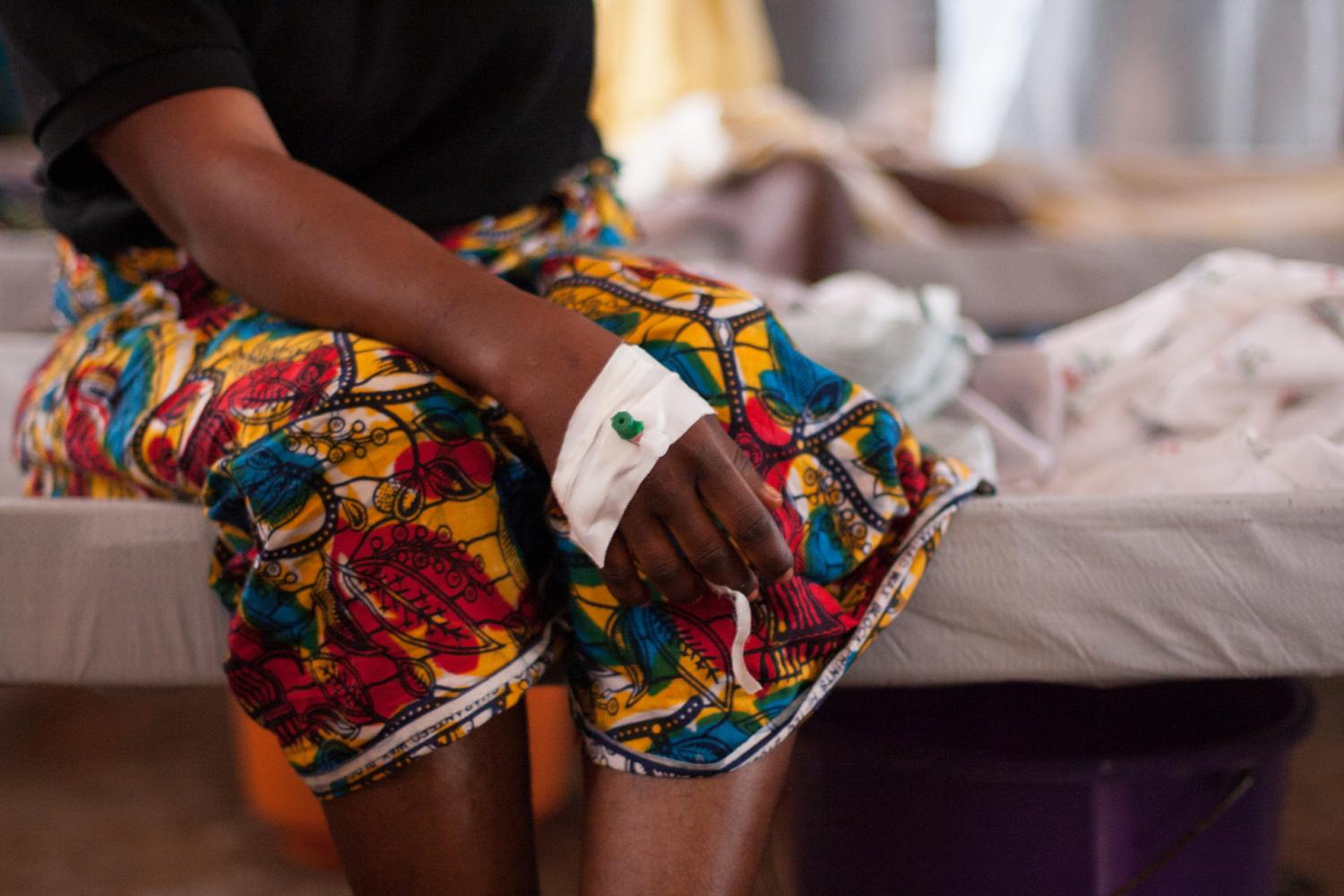Antibiotic-resistant bacterial pathogens were responsible for a quarter of a million deaths in Africa in 2019, an international team of researchers reported last week in The Lancet Global Health.
Those 250,000 deaths were among the more than 1 million associated with antimicrobial resistance (AMR) in the World Health Organization (WHO) African region in 2019, according to the study, the first to present regional- and country-level AMR estimates for the continent. The number of deaths associated with AMR exceeds that of two of Africa's leading infectious disease killers—HIV (639,544 deaths in 2019) and malaria (594,348).
Although the analysis found that the fraction of infectious bacterial disease deaths in Africa associated with and attributable to AMR were the lowest of any WHO region, infection-related mortality rates were the highest, which the study authors say is a reflection of the continent's high infection rate.
"Despite the relatively low prevalence of resistance in the region, the sheer number of infections yields high AMR mortality," they wrote.
Calculating the burden of AMR
The modeling study, conducted by a team led by researchers with the University of Washington's Institute for Health Metrics and Evaluation (IHME) and the University of Oxford's Centre for Tropical Medicine and Global Health, used data from a variety of sources to estimate deaths and disability-adjusted life-years (DALYs) attributable to and associated with 12 major infectious syndromes, 23 bacterial pathogens, and 88 drug-pathogen combinations in the 47 countries of the WHO African region in 2019.
The methodology in the study was similar to the approach used in the January 2022 Global Research on Antimicrobial Resistance (GRAM) report, which estimated that 1.27 million deaths globally were directly attributable to AMR in 2019 (out of 4.95 million associated with drug-resistant pathogens). Previous studies in the series have analyzed associated and attributable AMR deaths in the Region of the Americas and Europe.
The data included in the analysis consisted of 343 million individual records or bacterial isolates collected from global, regional, and national surveillance systems; hospital systems; systematic literature reviews; and other sources. The researchers also looked at sociodemographic factors, antibiotic consumption, the status of countries' AMR national action plans, and access to safe water, sanitation, and hygiene (WaSH).
The researchers used these data to estimate the number of deaths in which infection played a role, the proportion of deaths attributable to a given infectious syndrome, the proportion of infectious syndrome deaths attributable to a given pathogen, the percentage of pathogens resistant to an antibiotic, and the excess risk of mortality associated with a drug-resistant infection.
As in the previous studies, the researchers calculated the AMR burden (deaths and DALYs) using an approach based on two counterfactual scenarios. To estimate deaths directly attributable to a drug-resistant bacterial infection, they considered a scenario in which those infections were replaced by antibiotic-susceptible infections. To estimate associated deaths—meaning deaths in which AMR may have played a role, but an underlying condition was also responsible—they considered a scenario in which resistant infections were replaced by no infection.
More than 3.8 million deaths from infection
Overall, the analysis estimated that 3.83 millions deaths in the WHO African region in 2019 involved an infection, and 1.86 million of those deaths involved both resistant and susceptible bacteria. Of these, 1.05 million were associated with AMR, and 250,000 were attributable to AMR.
The four infectious syndromes with the largest fatal AMR burden were lower respiratory and thorax infections (521,000 AMR-associated deaths and 119,000 AMR-attributable deaths), bloodstream infections (236,000 AMR-associated deaths and 56,000 AMR-attributable deaths) intra-abdominal infections (106,000 AMR-associated deaths and 26,000 AMR-attributable deaths), and tuberculosis (42,000 AMR-associated deaths and 18,000 AMR-attributable deaths).
Collectively, seven pathogens were responsible for 821,000 AMR-associated deaths in the region, with four pathogens each exceeding 100,000 deaths: Streptococcus pneumoniae (195,000 deaths), Klebsiella pneumoniae (184,000 deaths), Escherichia coli (147,000 deaths), and Staphylococcus aureus (136,000 deaths).
Despite the relatively low prevalence of resistance in the region, the sheer number of infections yields high AMR mortality.
The three drug-pathogen combinations responsible for the largest proportion of attributable AMR deaths were third-generation cephalosporin-resistant K pneumoniae (19,000 deaths), trimethoprim-sulfamethoxazole–resistant S pneumoniae (16,500 deaths), and methicillin-resistant S aureus (15,300 deaths)
The country with the highest overall age-standardized mortality rate associated with and attributable to AMR was the Central African Republic, with an estimated 251.3 AMR-associated deaths and 60.2 AMR-attributable deaths per 100,000 population. Notably, the two other countries that exceeded 200 AMR-associated deaths per 100,000—Lesotho and Eritrea—have an AMR national action plan that is currently being implemented.
The analysis also found that for most African countries, the number of AMR-associated and AMR-attributable deaths was higher among neonates (28 days and younger) than in older age-groups, particularly in countries in central and western Africa.
Vaccines, safe water, effective antibiotics could help
Overall, the researchers found that countries that have a higher development score and better access to safe water and hygiene and that use more antibiotics per capita had a lower AMR mortality burden. The authors say this suggests that in Africa, AMR deaths are being driven by factors other than high antibiotic use.
"High infection rates have long been acknowledged as drivers of immense mortality and morbidity throughout Africa, and given that prevalence of resistance is comparatively low in this region, our findings implicate these disproportionate rates, especially for specific pathogens, as primary drivers of AMR burden," they wrote.
To reduce the infectious disease and AMR burden on the continent, they call for renewed investment in the development and distribution of vaccines that could prevent some of these infections—particularly those targeting S pneumoniae, K pneumoniae, E coli, and S aureus—and for better access to primary healthcare, effective antibiotics, and WaSH infrastructure.
And while they acknowledge that the analysis is limited by the lack of reliable AMR surveillance data in many African countries, they say the results could be used by local governments to develop tailored antimicrobial stewardship programs and infection prevention and control policies that mitigate the leading pathogen-drug combinations.






















